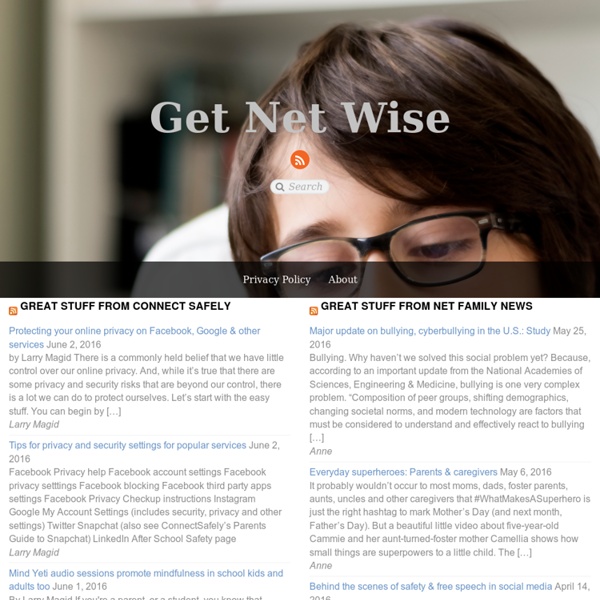



The Digital Citizenship Survival Kit | Comfortably 2.0 It's a simple little prop I use when teaching Digital Citizenship to our K-8 #aurorahuskies students. I love utilizing props to try to get my point across to students. To me, it helps a student retain the lesson better. Let me introduce you to Mr. Badura's "Digital Citizenship Survival Kit." Here are the items I have in my "Digital Citizenship Survival Kit" and what each item represents: Padlock The padlock is to remind students to set strong passwords and to set up passcode locks on all of their digital devices. Toothbrush I tell students to think that passwords and toothbrushes are very similar in the fact that you NEVER want to share passwords. Permanent Marker Everything that you put online is permanent....even if you hit the delete button after posting. Toothpaste Imagine the information that you are putting online is like the toothpaste coming out of the tube. The survival kit is very simple.
CSRIU: Center for Safe and Responsible Internet Use Nancy Willard: Cyber Savvy: A Web 2.0 Approach to Internet Safety Cyber Savvy: Supporting Safe and Responsible Internet Use Issues related to youth risk online and Internet use management are high on the “radar” in many schools. Following the lead of Virginia, many states also are beginning to require that students be instructed in Internet safety. Student use of Web 2.0 technologies is expanding, along with incredible opportunities for interactive educational activities -- and a host of risk and management concerns. We also are seeing signs of an emerging recognition that the Web 1.0 Internet safety approach -- based on simplistic, fear-based rules -- is ineffective. The understanding also is emerging that youth risk online must be viewed from the perspective of adolescent risk. An effective school-based strategy to address the issue of online safety should include these six key components: Supervision and Monitoring Schools must shift focus from reliance on filtering to better supervision and monitoring.
www.bullying.org Where you are NOT alone! Created by Bill Belsey (Canada) Web-monitoring software gathers data on kid chats (AP) -- Parents who install a leading brand of software to monitor their kids' online activities may be unwittingly allowing the developer to gather marketing data from children as young as 7 - and to sell that information. Software sold under the Sentry and FamilySafe brands can read private chats conducted through Yahoo, MSN, AOL and other services, and send that data back to the company. The information is then offered to businesses seeking ways to tailor their marketing messages to kids. "This scares me more than anything I have seen using monitoring technology," said Parry Aftab, a child-safety advocate. "You don't put children's personal information at risk." The software does not record children's names, addresses or other identifiable information, but it knows how old they are because parents customize the programs to be more or less permissive, depending on age. One competitor, CyberPatrol LLC, said it would never consider such an arrangement. The Lite version is free.
#nymwars on twitter IPTV and internet video delivery models: video content services over IP in Australia Australians are increasingly able to view video content on their own terms, including when, where and how they want it, according to this report. The report is part of the ACMA’s ongoing research program into the application of emerging technologies. It provides taxonomy of the new delivery models and discusses the changes to the commercial environment. The report identifies that, while traditional content viewing services such as free-to-air and subscription broadcasting still form the overwhelming backbone for video and television content viewing in Australia, there has been a material increase in the number of alternative distribution methods – with several using the internet. The report suggests that one in five Australians have already viewed full-length television programs over the internet and one in eight have viewed full-length films.